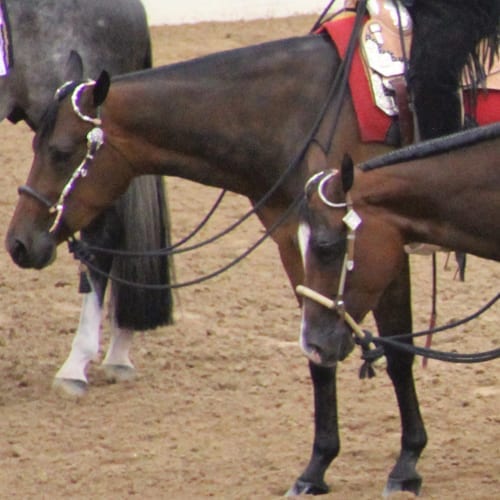With the overwhelming response to our equipment article, GoHorseShow.com asked several breeders, trainers, non-pros and owners whether they believe the two year-old futurity classes help or hinder the industry. Not surprisingly, this is a hot button issue with varying opinions.
Some individuals are convinced that the majority of two year-olds are not mature enough to compete at such a high level, and it borderlines on abuse. Many think that these young futurity horses are unnecessarily pushed too hard and too fast leaving them unsound both physically and mentally.
On the other hand, some trainers are of the opinion that certain two year-olds mature early and are strong enough to compete immediately. Several trainers mentioned that all horses should be evaluated on a case-by-case basis. We also asked what they thought if two year-old classes were eliminated–would that be a benefit to the future health and career of the horse or cause devastating economic repercussions? Please let us know your opinion by making a comment and voting in the poll at the end of the article.
 Greg Wheat— I feel the two year-olds are better now than they have ever been in our industry. People are taking better care of them and only trying to show the colts that are mature enough to withstand the training. The trainers and owners are keeping back the colts that need more time to mature on their own without changing any rules on showing two year-olds. If these colts are not hauled and trained as two’s, the trail and western riding numbers in the junior classes will start to fall off because there will not be any horses far enough along in training to continue them on in the other events. AQHA needs to check their records on how much the breeding has dropped off over the last three years and maybe they will see if they cut the two year-olds out, there will be even less people breeding which in turn means less registrations and less money for AQHA.
Greg Wheat— I feel the two year-olds are better now than they have ever been in our industry. People are taking better care of them and only trying to show the colts that are mature enough to withstand the training. The trainers and owners are keeping back the colts that need more time to mature on their own without changing any rules on showing two year-olds. If these colts are not hauled and trained as two’s, the trail and western riding numbers in the junior classes will start to fall off because there will not be any horses far enough along in training to continue them on in the other events. AQHA needs to check their records on how much the breeding has dropped off over the last three years and maybe they will see if they cut the two year-olds out, there will be even less people breeding which in turn means less registrations and less money for AQHA.
 Brad Jewett–Well, I may be one of the few but it wouldn’t hurt my feelings to see the two year-old classes go away and make them three-year old events. Then, push the age of a junior horse to six and under–hoping we would see more sound horses and better horses when they’re first shown. I would say there’s only a select few two year-olds that are truly good enough to show as two year-olds anyway. I think it would help the soundness of our horses as well as their value.
Brad Jewett–Well, I may be one of the few but it wouldn’t hurt my feelings to see the two year-old classes go away and make them three-year old events. Then, push the age of a junior horse to six and under–hoping we would see more sound horses and better horses when they’re first shown. I would say there’s only a select few two year-olds that are truly good enough to show as two year-olds anyway. I think it would help the soundness of our horses as well as their value.
 Leonard Berryhill–Though I participate in the pleasure classes on a limited scale, pleasure is still very much of interest to me as it produces many of the all-around horses we show today. I am in favor of two year-old classes, but I feel that more and stronger stewardship by active horsemen is in order and possibly putting the majority of major prize money in the three year-old classes will alleviate the pressure of having to try to make a young horse do something they are not quite ready for.
Leonard Berryhill–Though I participate in the pleasure classes on a limited scale, pleasure is still very much of interest to me as it produces many of the all-around horses we show today. I am in favor of two year-old classes, but I feel that more and stronger stewardship by active horsemen is in order and possibly putting the majority of major prize money in the three year-old classes will alleviate the pressure of having to try to make a young horse do something they are not quite ready for.
 Beth Case–I love the two year-old hunt seat classes. It is my favorite class to prepare for during the show season. All the horses I have shown have been big and mature and ready to show. I’ve won the Congress Two Year-Old Hunter Under saddle five times, and I always pick the horse that steps up and naturally wants to show. The problem I see is the slot classes where you have to nominate a particular horse so early in the year. Owners pay so much money and then the one that they pick for the slot class may not mature as fast as the trainer thought, and, then, the trainers have to force them and push them unnecessarily because the owners have spent so much money to nominate this particular one. Personally, I think it would make more sense for owners to buy slots but then they can wait and nominate a horse that is ready to show a few weeks before the event. It would be more exciting because people would not know which horses would be showing because trainers would be just showing up and showing their best one that year.
Beth Case–I love the two year-old hunt seat classes. It is my favorite class to prepare for during the show season. All the horses I have shown have been big and mature and ready to show. I’ve won the Congress Two Year-Old Hunter Under saddle five times, and I always pick the horse that steps up and naturally wants to show. The problem I see is the slot classes where you have to nominate a particular horse so early in the year. Owners pay so much money and then the one that they pick for the slot class may not mature as fast as the trainer thought, and, then, the trainers have to force them and push them unnecessarily because the owners have spent so much money to nominate this particular one. Personally, I think it would make more sense for owners to buy slots but then they can wait and nominate a horse that is ready to show a few weeks before the event. It would be more exciting because people would not know which horses would be showing because trainers would be just showing up and showing their best one that year.
 Debbi Trubee–With babies being born in the early part of the year, a lot of the two year-olds are well into their two year-old year before they are shown. Most trainers are smart enough to understand that they need a big strong two to be competitive and they leave their less mature horses for the Maiden events as three year-olds. I don’t disagree that there are a portion of trainers that will go to any length to win a prize but the majority do what is right by the horse. I personally would like them moved to fall because it gives more time to prepare the two’s. I think that equates to less pressure in getting them started so early. The industry has made good headway in offering incentives to hold young stock back with the Maiden events for three and over horses. A few months can make a big difference in preparing a two year-old.
Debbi Trubee–With babies being born in the early part of the year, a lot of the two year-olds are well into their two year-old year before they are shown. Most trainers are smart enough to understand that they need a big strong two to be competitive and they leave their less mature horses for the Maiden events as three year-olds. I don’t disagree that there are a portion of trainers that will go to any length to win a prize but the majority do what is right by the horse. I personally would like them moved to fall because it gives more time to prepare the two’s. I think that equates to less pressure in getting them started so early. The industry has made good headway in offering incentives to hold young stock back with the Maiden events for three and over horses. A few months can make a big difference in preparing a two year-old.
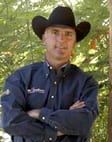 Cleve Wells–It really makes no difference to me if AQHA decides to eliminate the two year-old classes because we will still be able to show them other places. What about two year-old racing? I bet they don’t want to touch that. There will always be two year-old futurities no matter what AQHA does. The breeders are not going to hold on to them that long and our customers don’t want to put them in training for 18 months before they can be shown.
Cleve Wells–It really makes no difference to me if AQHA decides to eliminate the two year-old classes because we will still be able to show them other places. What about two year-old racing? I bet they don’t want to touch that. There will always be two year-old futurities no matter what AQHA does. The breeders are not going to hold on to them that long and our customers don’t want to put them in training for 18 months before they can be shown.
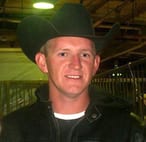 Andy Frank–I definitely think the two year old classes are beneficial to the horse industry and AQHA, overall. As a trainer, I really enjoy the challenge of preparing two-year olds to compete. However, I do think there are only a select few that make it their two year-old year. It really does take a big and strong horse. If one is not ready to compete at that age, AQHA and NSBA has now fulfilled other options for these horses for later in their career. Overall, I do think the two year-old classes should stay. It challenges us as trainers and benefits the horse industry in so many ways.
Andy Frank–I definitely think the two year old classes are beneficial to the horse industry and AQHA, overall. As a trainer, I really enjoy the challenge of preparing two-year olds to compete. However, I do think there are only a select few that make it their two year-old year. It really does take a big and strong horse. If one is not ready to compete at that age, AQHA and NSBA has now fulfilled other options for these horses for later in their career. Overall, I do think the two year-old classes should stay. It challenges us as trainers and benefits the horse industry in so many ways.
 Steve Heckaman–My thoughts about the two year-old classes have changed over the years since I became a breeder. Back in the 80’s and 90’s when the bulk of my operation was training, the two year-old class was the most watched event at the major futurities and doing well meant an increase in business thereafter. I began to realize that the demands for technical detail in training increased due to competition and very few two year-olds have reached their physical and mental maturity by then. We see it all of the time…a superstar two year-old that has an unbelievable performance at a show or two but fades into obscurity as a three and after because they were pushed too hard while they were young. Not all do but the ones that don’t lately seem to be the exception more than the rule. As a breeder, I know how hard it is to raise the really good ones, so my philosophy has changed about waiting until the horse has reached a more mature level before thinking about horse shows.
Steve Heckaman–My thoughts about the two year-old classes have changed over the years since I became a breeder. Back in the 80’s and 90’s when the bulk of my operation was training, the two year-old class was the most watched event at the major futurities and doing well meant an increase in business thereafter. I began to realize that the demands for technical detail in training increased due to competition and very few two year-olds have reached their physical and mental maturity by then. We see it all of the time…a superstar two year-old that has an unbelievable performance at a show or two but fades into obscurity as a three and after because they were pushed too hard while they were young. Not all do but the ones that don’t lately seem to be the exception more than the rule. As a breeder, I know how hard it is to raise the really good ones, so my philosophy has changed about waiting until the horse has reached a more mature level before thinking about horse shows.
 Liz Barnard Hay–I think the Two Year Old Futurity classes can be a very touchy subject. It is kind of like the equipment article responses that it’s not the equipment it is the person using the equipment. That would be my feelings about the Two Year-Old futurity classes. Some trainers are great at starting two year-olds and some are not. I think the two year-old classes are great for our industry and especially the breeders. I think the problem is when trainers push the two year-olds because of the pressure either they or the owners put on themselves to “make” a horse a two year-old futurity horse. I don’t think it is fair to say that the classes are bad for our industry or horses. Just look at the final placings of the Senior Western Pleasure at the 2011 AQHA World Show. There were six out of the Top 10 that were “big time” Two Year Old Futurity horses, and that is just the ones I know for sure, I think a couple of the others were shown also.
Liz Barnard Hay–I think the Two Year Old Futurity classes can be a very touchy subject. It is kind of like the equipment article responses that it’s not the equipment it is the person using the equipment. That would be my feelings about the Two Year-Old futurity classes. Some trainers are great at starting two year-olds and some are not. I think the two year-old classes are great for our industry and especially the breeders. I think the problem is when trainers push the two year-olds because of the pressure either they or the owners put on themselves to “make” a horse a two year-old futurity horse. I don’t think it is fair to say that the classes are bad for our industry or horses. Just look at the final placings of the Senior Western Pleasure at the 2011 AQHA World Show. There were six out of the Top 10 that were “big time” Two Year Old Futurity horses, and that is just the ones I know for sure, I think a couple of the others were shown also.
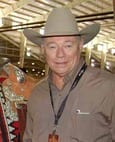 Ken Masterson–From a breeder’s perspective, such a development would be disastrous. The breeding industry is currently in a precarious position. Some breeders have in fact exited the business and many more have down sized. The significant decline in AQHA registrations bears ample witness to these trends. In short, this is not the time to make game changing decisions for the industry when the economic consequences would be so severe.The breeders currently bear three years of expense for a dam and foal before any meaningful opportunity exists to sell that foal – perhaps at the earliest as a middle or long yearling. More often, no real sales opportunity exists until that yearling or two year old has been started under saddle and perhaps even shown. In short, this front-loading of expense before revenue is the breeding industry’s greatest burden. If both another year of expenses and another year without revenue are added, there will be little economic opportunity left for breeders – large or small.
Ken Masterson–From a breeder’s perspective, such a development would be disastrous. The breeding industry is currently in a precarious position. Some breeders have in fact exited the business and many more have down sized. The significant decline in AQHA registrations bears ample witness to these trends. In short, this is not the time to make game changing decisions for the industry when the economic consequences would be so severe.The breeders currently bear three years of expense for a dam and foal before any meaningful opportunity exists to sell that foal – perhaps at the earliest as a middle or long yearling. More often, no real sales opportunity exists until that yearling or two year old has been started under saddle and perhaps even shown. In short, this front-loading of expense before revenue is the breeding industry’s greatest burden. If both another year of expenses and another year without revenue are added, there will be little economic opportunity left for breeders – large or small.
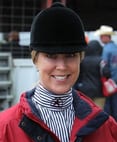 Adria Smith–This is my first year with two year-olds by my stallions that are ready to show. The oldest offspring by Iron Age are two year-olds. Prior to this year, I’ve not had any of my own two’s to show. I’m looking forward to The Tar Heel Futurity, Tom Powers, Big A/Southern Belle, NSBA World and Congress just to see them show. If you can show and sell them as two’s, it is easier on your feed bill-that one additional year is expensive to allow the horse to grow and start showing as a three year-old. I trust what my trainers tell me as far as which two year-old will make a June start and which will make a later start.
Adria Smith–This is my first year with two year-olds by my stallions that are ready to show. The oldest offspring by Iron Age are two year-olds. Prior to this year, I’ve not had any of my own two’s to show. I’m looking forward to The Tar Heel Futurity, Tom Powers, Big A/Southern Belle, NSBA World and Congress just to see them show. If you can show and sell them as two’s, it is easier on your feed bill-that one additional year is expensive to allow the horse to grow and start showing as a three year-old. I trust what my trainers tell me as far as which two year-old will make a June start and which will make a later start.
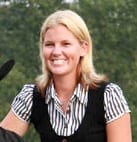 Darla Lee–I would truly be disappointed to lose the two year-old classes. The two year-old hunter under saddle is my favorite class to show. I find it a great challenge to take a two year-old from start to finish, and I feel that it is part of the process to decide which ones are capable to make it as two year-olds and which ones need to be saved back for the three’s. I think that there are enough maiden three year-old classes that it encourages people to save the weaker two year-olds for the next year–but there is nothing better than showing a great two year-old that you brought on from start to finish.
Darla Lee–I would truly be disappointed to lose the two year-old classes. The two year-old hunter under saddle is my favorite class to show. I find it a great challenge to take a two year-old from start to finish, and I feel that it is part of the process to decide which ones are capable to make it as two year-olds and which ones need to be saved back for the three’s. I think that there are enough maiden three year-old classes that it encourages people to save the weaker two year-olds for the next year–but there is nothing better than showing a great two year-old that you brought on from start to finish.
 Missy Thyfault–I think eliminating the two year old classes would be a mistake. If the idea is to save the horses until they are three’s and then show, it won’t change that our three year-olds have to be just as broke and ready as they are now. People will still have the stronger twos in training. It has to come down to people making the right decisions on training up the ones that are physically and mentally strong enough and letting the others wait as most of us already do. I also think fewer people will breed as they won’t want to hold onto the babies longer because there is nothing to do until they are three. I love the two year-old classes and would hate to see this happen.
Missy Thyfault–I think eliminating the two year old classes would be a mistake. If the idea is to save the horses until they are three’s and then show, it won’t change that our three year-olds have to be just as broke and ready as they are now. People will still have the stronger twos in training. It has to come down to people making the right decisions on training up the ones that are physically and mentally strong enough and letting the others wait as most of us already do. I also think fewer people will breed as they won’t want to hold onto the babies longer because there is nothing to do until they are three. I love the two year-old classes and would hate to see this happen.
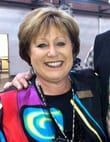 Dianne Eppers–The NSBA was formed on the foundation to promote and improve the quality of the pleasure horse and to encourage the use of more humane training methods and training equipment, thereby contributing to the longevity of the pleasure horse. NSBA has brought about some changes that involve the showing of yearlings, two year olds and three year olds. The high point yearling longe line class has restrictions that the winner is based on points earned in five shows only, rather than the accumulation of total points earned in the year. The two year-old class is restricted to showing after July 1 of the two year-old year. The NSBA Breeders Championship Futurity offers classes in the yearling longe line division, two year-old and three year-olds; however, the percentage of the payout is the largest for the three year-olds. Watching the young horses debut in the show arena continues to be popular as seen in the maiden classes offered for horses that have never been shown. Large purses will continue to cause some individuals to push the envelope when it comes to preparation for competition, but the monitor system needs to be on the individuals at which we place the care of our horse. The public is becoming increasingly aware of methods that are unacceptable practices of horsemen, and it is the responsibility of the governing bodies within the associations to enforce discipline when these practices are violated.
Dianne Eppers–The NSBA was formed on the foundation to promote and improve the quality of the pleasure horse and to encourage the use of more humane training methods and training equipment, thereby contributing to the longevity of the pleasure horse. NSBA has brought about some changes that involve the showing of yearlings, two year olds and three year olds. The high point yearling longe line class has restrictions that the winner is based on points earned in five shows only, rather than the accumulation of total points earned in the year. The two year-old class is restricted to showing after July 1 of the two year-old year. The NSBA Breeders Championship Futurity offers classes in the yearling longe line division, two year-old and three year-olds; however, the percentage of the payout is the largest for the three year-olds. Watching the young horses debut in the show arena continues to be popular as seen in the maiden classes offered for horses that have never been shown. Large purses will continue to cause some individuals to push the envelope when it comes to preparation for competition, but the monitor system needs to be on the individuals at which we place the care of our horse. The public is becoming increasingly aware of methods that are unacceptable practices of horsemen, and it is the responsibility of the governing bodies within the associations to enforce discipline when these practices are violated.
 Garth Gooding–-I don’t think you can say the two year-old class hinders two year-olds longevity. When you look at two of the best pleasure horses of all time, A Certain Vino and Vital Signs Are Good, they were both shown as two year olds. There are many other great examples of two year-olds that have had great longevity. For the great horses, it comes so easy that it’s really not a high pressure situation for those horses. In my opinion, if we did away with the two year-olds all together, we would still have the same problems we are presently faced with–a horse is sold to someone with the promise of high expectations for the horse. The customer sometimes forgets there is no sure bet when dealing with animals. Sometimes the best looking two year-old in March or April just doesn’t quite finish out like you thought it would. It’s not that anybody is cheating someone; it’s just part of the sport. As a trainer you feel the pressure to try and make it work out like you promised when you talked the customer into buying the horse. You usually have a good sense as to whether the customer is going to let you back off the horse and save it for another year or if the customer is going to doubt you and jump ship and go with another trainer. While it’s easy to say the trainer should have the integrity to do what’s best for the horse and let the customer move on to the next trainer, the fact of the matter is there are a lot of trainers out there right now who financially can’t do that. That same scenario would happen to a three year-old just as easy.
Garth Gooding–-I don’t think you can say the two year-old class hinders two year-olds longevity. When you look at two of the best pleasure horses of all time, A Certain Vino and Vital Signs Are Good, they were both shown as two year olds. There are many other great examples of two year-olds that have had great longevity. For the great horses, it comes so easy that it’s really not a high pressure situation for those horses. In my opinion, if we did away with the two year-olds all together, we would still have the same problems we are presently faced with–a horse is sold to someone with the promise of high expectations for the horse. The customer sometimes forgets there is no sure bet when dealing with animals. Sometimes the best looking two year-old in March or April just doesn’t quite finish out like you thought it would. It’s not that anybody is cheating someone; it’s just part of the sport. As a trainer you feel the pressure to try and make it work out like you promised when you talked the customer into buying the horse. You usually have a good sense as to whether the customer is going to let you back off the horse and save it for another year or if the customer is going to doubt you and jump ship and go with another trainer. While it’s easy to say the trainer should have the integrity to do what’s best for the horse and let the customer move on to the next trainer, the fact of the matter is there are a lot of trainers out there right now who financially can’t do that. That same scenario would happen to a three year-old just as easy.


